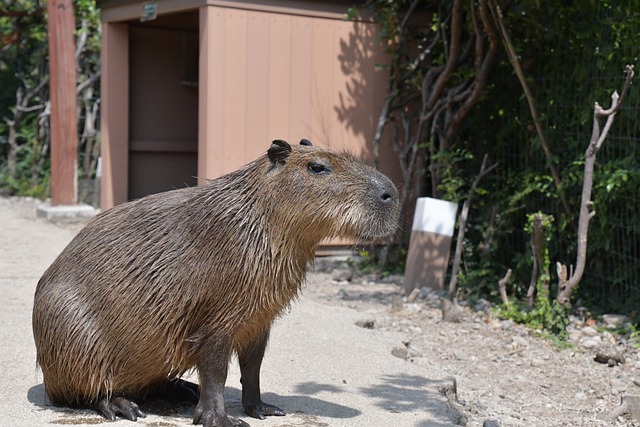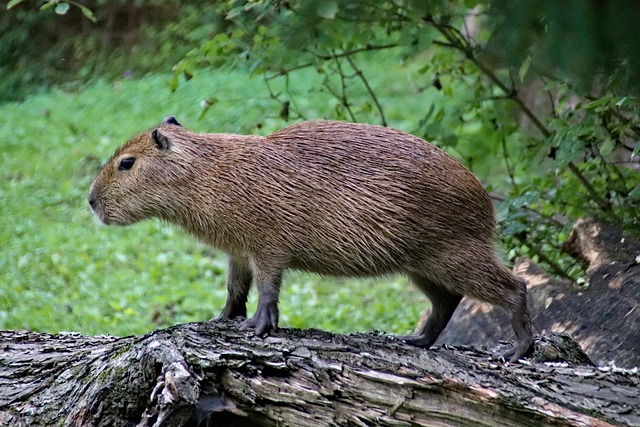If you’re a guinea pig owner, you might wonder if your pet is pregnant. One of the most common signs of pregnancy in guinea pigs is the enlargement of the nipples, which can indicate that your pet is expecting. Let’s dive into why this happens and what other physical changes you should look out for.
Do guinea pigs’ nipples change when pregnant?
Yes, guinea pigs’ nipples change when they become pregnant.
During the early stages of pregnancy, the nipples can become slightly swollen and darker in color.
Toward the middle of the pregnancy, the nipples will start to “pink up” as more blood flow goes their way.
Then near the end of the pregnancy, some guinea pigs may develop a milky fluid on or around the nipple area.
This signifies that they are starting to produce colostrum for their offspring to feed on after delivery.
It is normal if your guinea pig’s nipples change during pregnancy, and you shouldn’t be too worried about it unless there is any sign of infection or discomfort.
Changes in Nipples During Pregnancy
When a female guinea pig becomes pregnant, her nipples become slightly enlarged and more pronounced.
This occurs due to increased blood flow and hormones during pregnancy, which cause the nipples to become somewhat swollen.
It is important to note that not all pregnant guinea pigs have enlarged nipples—this symptom may vary from one animal to another.
Additionally, it can take up to four weeks for the change in nipple size to become noticeable.
Other Physical Changes
In addition to enlarged nipples, there are several other physical changes you can look out for when trying to determine if your guinea pig is expecting:
• Increased appetite – As with human pregnancies, increased hunger is common among mothers-to-be! Look out for a more enormous appetite than usual in your pet.
• Weight gain – The average female guinea pig gains between 0.3 and 0.9 ounces per day during pregnancy, so keep an eye on your pet’s weight gain over time to help determine whether or not she is expecting.
• Change in movement – Pregnant guinea pigs will often move less frequently and become lazier around the home than usual—this could be a sign that she is expecting.
Different types of guinea pig nipples
Guinea pigs have a variety of nipple types that can be used to differentiate between genders.
Male guinea pigs typically have circular nipples, while female guinea pigs usually have inverted teardrop or button-shaped nipples.
It’s essential to pay attention to this detail when owning multiple guinea pigs, as it is one of the quickest ways to tell male from female.
However, these differences may not always be readily apparent, especially in baby guinea pigs.
If unsure of a particular guinea pig’s gender, it is recommended to consult an experienced veterinarian to identify them more accurately.
How long do mother guinea pigs breastfeed their young?
Mother guinea pigs have been known to engage in extended breastfeeding of their young, with the average litter nursing for up to eight weeks after birth.
This extended lactation period allows the offspring ample time to grow, develop and become independent before going into the world independently.
During this time, mothers provide their pups with vital nutrition and protection so that they can reach adulthood healthy and safe.
This process is essential to maintaining a sustainable population within guinea pig communities, ensuring that survival rates remain high among individuals.
How many pups do guinea pigs give birth to?
Typically guinea pigs give birth to litters of between one and seven pups, though more than seven is not unheard of.
Female guinea pigs reach sexual maturity at about three weeks, so the gestation period averages only 65 days.
Newborns are usually well-developed, with fur and fully opened eyes, and will begin to eat solid food within 48 hours after birth.
All that said, it would be wise to be prepared for a surprising number of pups; female guinea pigs can hold sperm in their bodies for up to twelve months after mating, so it is possible that subsequent pregnancies could include extra pups if a female mate several times during this lengthy window.
Conclusion
If you notice these physical changes in your female guinea pig, she is likely pregnant. If you suspect your pet is expecting but aren’t sure, it’s always best to contact a veterinarian for confirmation.
Remember that only female guinea pigs can get pregnant (males do not), so if you only have male pets, there’s no need to worry about them becoming fathers! With these tips, you’ll be able to spot the signs of pregnancy quickly and easily—good luck.








